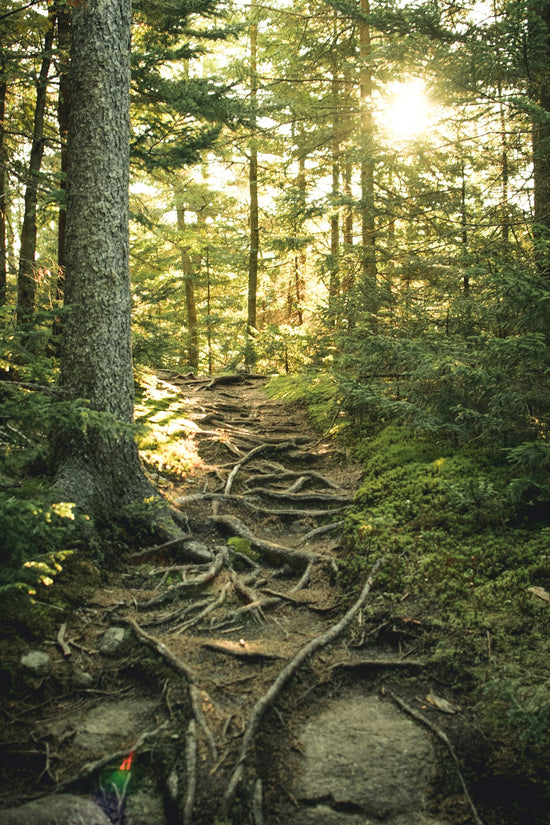Embarking on a multiday hike is the kind of adventure that transcends ordinary vacations. You're not just visiting a place; you're immersing yourself in Mother Nature's boundless beauty. Multiday hikes offer unrivaled access to the wilderness, providing breathtaking vistas, intimate connections with nature, and a genuine escape from the hustle and bustle of daily life. Whether you're a weekend warrior or an experienced trailblazer, packing efficiently and effectively is crucial to turning your hike into an epic journey. Let's delve into how you can pack like a pro for your next long-haul adventure. #fyp #backpacking #hiking #wilderness
Understanding Ultralight Backpacking
In the realm of multiday hiking, less is often more. Ultralight backpacking is about carrying the least possible weight to enhance mobility, conserve energy, and increase enjoyment on the trail. This doesn't mean compromising on safety or comfort but instead making informed choices about every item you carry. An ultralight pack typically weighs under 10 pounds, excluding food and water, and includes essential gear only.
Start with a Lightweight Shelter
A tent is one of the most substantial weight additions to a backpack, so opting for a lightweight shelter makes a significant impact. For solo hikers or those venturing on thru-hikes, the LytHarvest Ultralight Waterproof Bivvy Tent is an excellent choice, providing compact, weather-resistant coverage. Its minimalist design suits solo explorers aiming for prime portability.
Sleeping Systems: Stay Rested
A good sleep system will make or break your adventure. Lightweight options include a high-performing sleeping bag and sleeping pad. Choose sleeping bags made with synthetic or down fill for optimal warmth-to-weight efficiency. Sleeping pads add comfort and insulation, so consider an inflatable version for compact packing.
Cooking and Camp Stove Solutions
Modern backpacking stoves are light enough to make enjoying a hot meal on the trail a feasible reality. When choosing your stove, consider fuel availability, cooking speed, and weight. A compact canister stove is a sound option, providing a balance between weight, performance, and convenience.
Footwear: Traction and Comfort
One can't stress the importance of excellent hiking shoes or boots enough. If your hike ventures into snow-laden trails or icy paths, pack 1 Pair 13-Teeth Ice Snow Grippers to ensure safety and maintain your footing.
Dressing for the Trail
Layering is crucial for adapting to changing weather conditions. Base layers wick moisture, insulating layers trap warmth, and shell layers protect against wind and rain. A multifunctional piece like the 3-in-1 Waterproof Hooded Rain Poncho can serve double-duty as outerwear and emergency shelter.
Trail Food and Hydration
Balancing caloric density and weight is crucial when planning trail meals. Opt for dehydrated or freeze-dried foods that are lightweight yet nutritious. Don't forget to plan for plenty of snacks to keep your energy levels up. Hydration is paramount, so carry iodine tablets or a portable filtration system to purify water from natural sources.
Essential Gadgets and Gear
While going ultralight, certain tools are indispensable. A versatile tool like the Carbon Steel Folding Shovel is an excellent addition. It's useful for dig tasks like preparing a campfire or digging sanitation holes. Additionally, ShineTrip 10pcs Mini Ultralight Aluminum Alloy Tent Rope Buckles can secure your tent setup without adding unnecessary weight.
Trail Nav and Wilderness Prep
Navigation tools are not negotiable. Regardless of the trail's length or apparent simplicity, always have a reliable map, compass, and GPS device. Familiarize yourself with the basics of orienteering to stay on track. Emphasize safety by informing someone of your itinerary and planned return.
Campsite Setup
Efficient campsite setup is a blend of skill and art. Locate a flat, well-drained spot, distant from water sources to minimize environmental impact. Use lightweight ground tarps to secure your camp area, and practice Leave No Trace principles by restoring the site to its original condition upon departure.
Group Trek vs. Solo Backpack
Solo backpacking offers the opportunity for deeper introspection and self-reliance, while group trekking adds camaraderie and shared experiences. In either case, understanding your gear, rehearsing with it, and knowing how much you can tolerate is essential. Always choose companions whose pace and goals match yours.
The Other Half: Mental and Physical Prep
Mental preparedness can be as important as physical readiness. Acceptance of discomfort, adaptability to unpredictable scenarios, and a respect for nature's forces are crucial mindsets. Train physically by incorporating cardio and strength routines focusing on endurance, as well as hikes with a weighed backpack.
Varied Terrains and Choosing Your Epic Hike
From the mountainous challenges of the Pacific Crest Trail in North America to the verdant paths of New Zealand's Te Araroa Trail, or the spiritual waypoints of Spain's Camino de Santiago, multiday hikes occur on all continents, each offering unique landscapes, cultures, and challenges.
No matter where you venture, packing like a pro ensures you can focus on the experience rather than the logistics. Your pack is your lifeline; let it work for you, not against you. Equip yourself with knowledge, embrace the unpredictability, and savor every step on your path to an unforgettable adventure. For more guidance on the right gear to elevate your hike, explore more at Deadfall Creations. #trailnav #wildernessprep #campsetup #outdoorfun #lightweight #epicjourney #deadfallcreations







